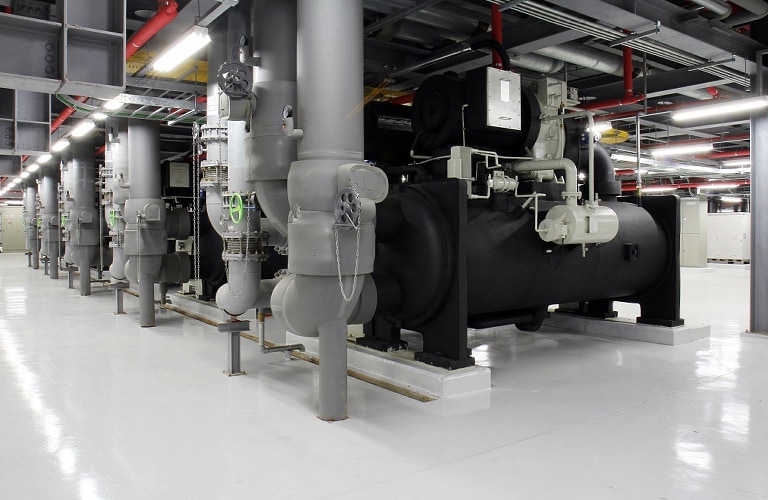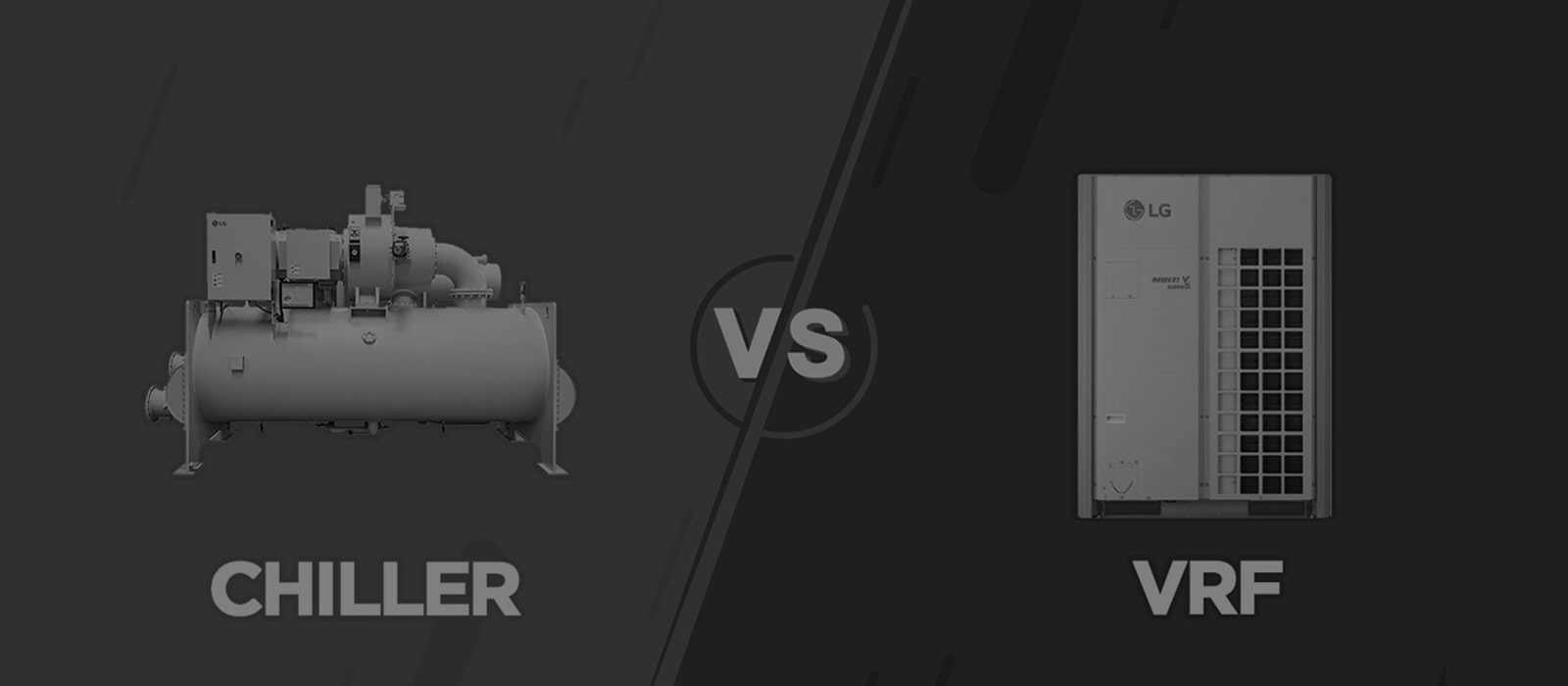-
For a building owner or administrator, selecting the best equipment for their facility is not an easy task. Many factors go into making sure each piece of equipment is the most energy-efficient, cost-efficient, effective and convenient choice for the overall facility and its occupants. As an HVAC system can be the most expensive and energy-consuming facet of any facility, choosing the right HVAC solution is all the more important. When it comes to commercial or industrial HVAC systems, we can look at the options available in 2 major categories: chiller systems and VRF systems. Let’s compare and break down chiller and VRF systems to learn more.


-
The Chiller Advantage
Chillers offer advantages to certain facility types and utilize AHUs to control airflow throughout a facility. When we look at the investment required for an HVAC system, initial equipment costs for a chiller system can be somewhat lower than a VRF and chillers offer high COPs that may ultimately be the most cost-efficient for more extensive facilities. Chiller s also offer more options for operating on alternative energy sources are ideal for large-scale facilities that require constant climate control such as industrial plants, power plants or large-scale shopping centers. Furthermore, chillers can provide options for more effective use of resources and take advantage of non-peak electricity costs with chilled-water and ice-storage systems. For regions where electricity supply is inconsistent and expensive or where there is a readily available source of chilled water available for cool-water systems, chillers can be the optimal choice for dependable operation and lower energy costs.


-
Home Field for VRF
VRF systems are more versatile and more efficient solutions in many instances that are suited for precision control and comfort. As far as convenience is concerned, VRF system outdoor units typically have a much smaller footprint and require less equipment than chillers, which makes installation more convenient and less expensive. In addition, VRF systems are easily integrated into the BMS of a building for the most accurate and effective system control. Recent VRF systems are highly efficient and most effective in facilities that require zoned climate control with diverse spaces and uses. In locations where electricity is readily available and less expensive, operating cost for VRF systems can be very competitive.


-
A Combined Effort
It is often the case that a facility needs the precision and flexibility of a VRF solution with the offsetting advantages of chiller options. An example of this is the Starfield Hanam complex in South Korea. Starfield Hanam is a multiplex shopping center with very diverse spaces such as individual shops, department stores, atriums, food courts, a theater that each come with unique requirements. LG centrifugal chillers, absorption chillers and ice energy storage chillers were installed along with LG’s Multi V solution to meet a wide range of climate requirements while offering a more efficient and cost-effective solution.


-
Making the most of your facility is a top priority and there are many options to consider. Once you have laid out the goals for any project, the next step is defining the path to meet those goals. Whether it be a lineup of chillers or a VRF system, be sure to comb through your options before making the critical decision. Feel free to reach out to LG Air Solution at any time for more in-depth analysis concerning your facility.
Please click the 'INQUIRY TO BUY' banner below to contact your local LG office for further information on solutions and products.








